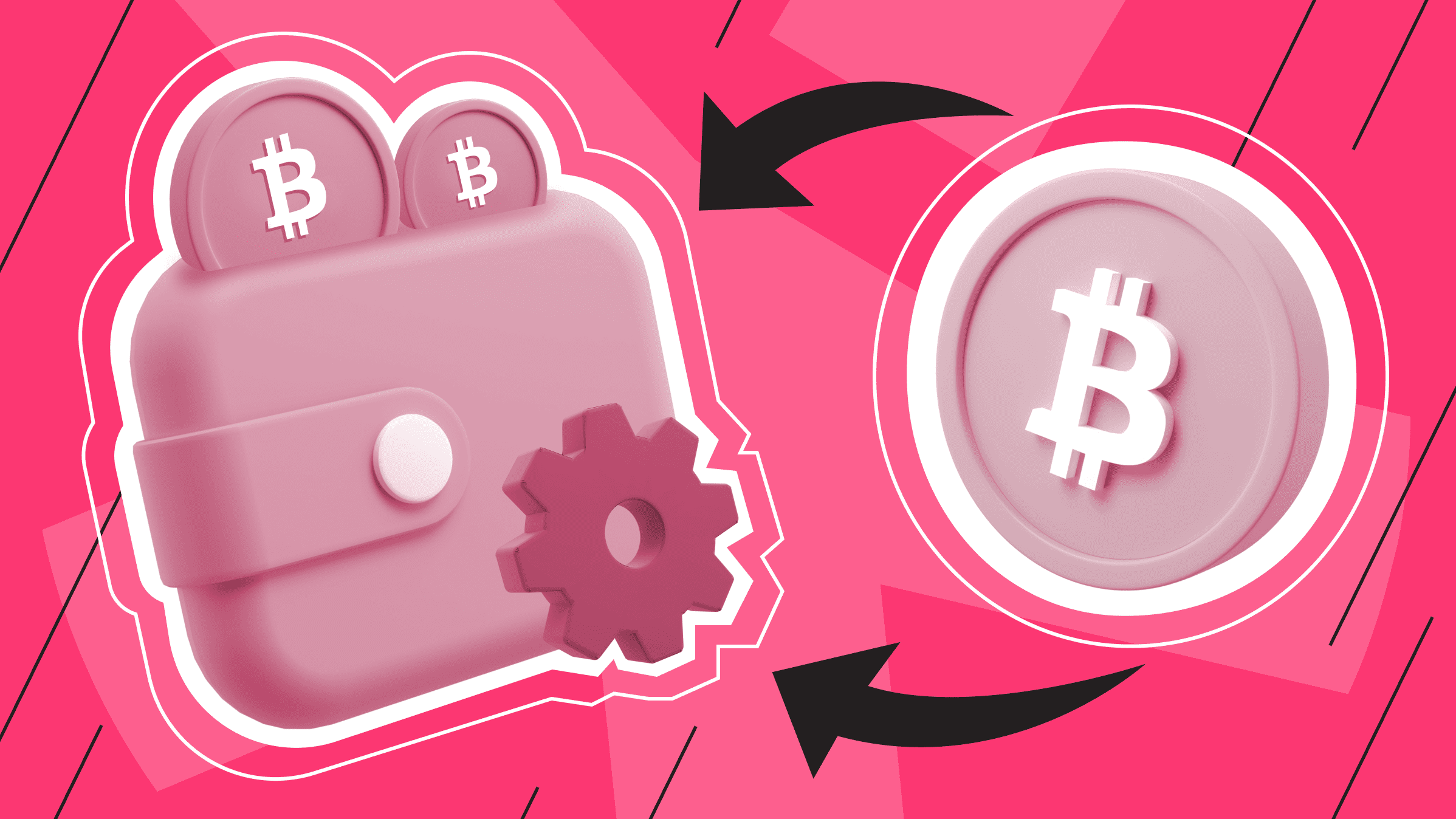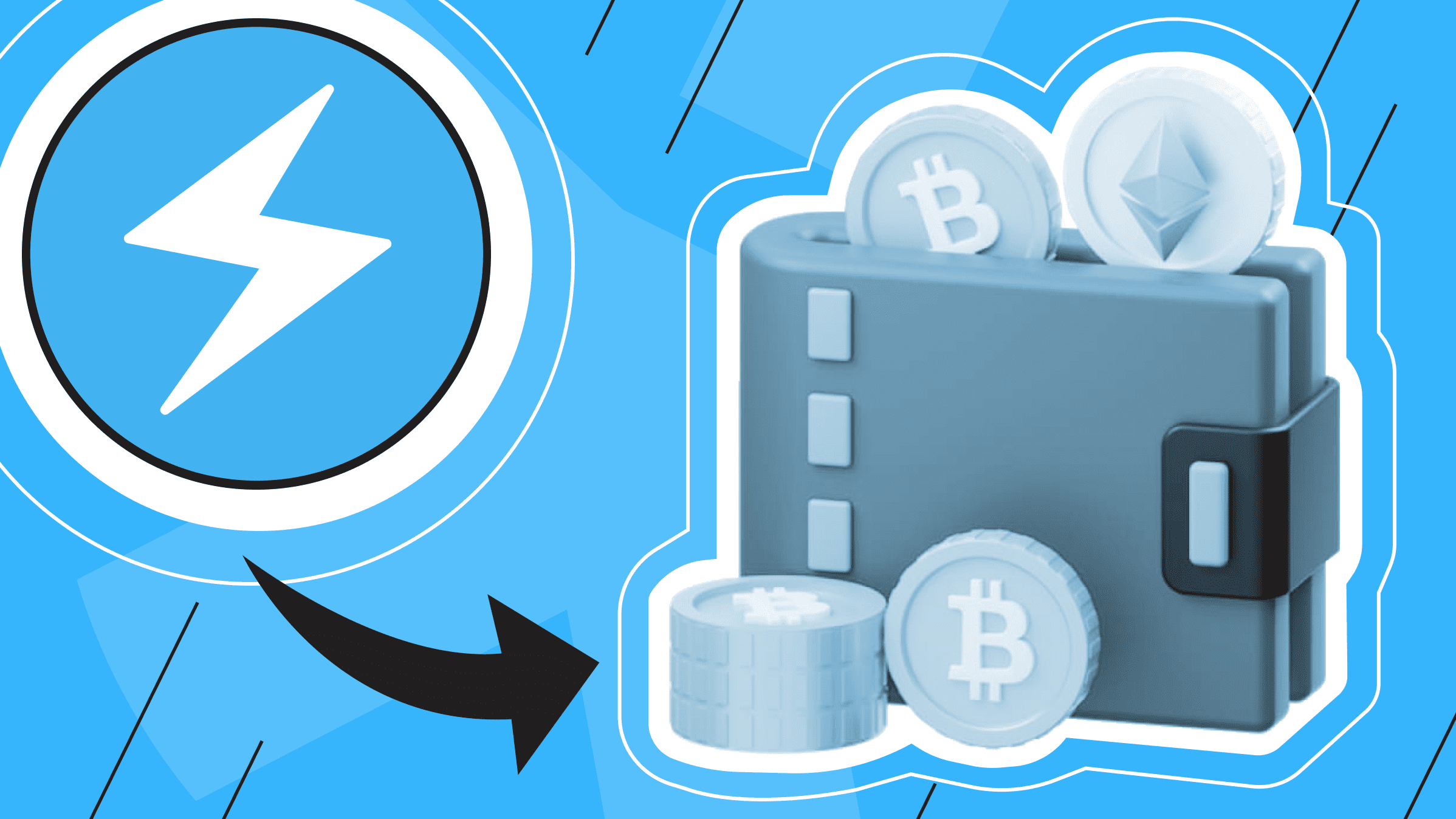
Bitcoin Core, the software on which the Bitcoin network is based, has revolutionized the cryptosphere since its introduction. Bitcoin Core is open source and thoroughly vetted by a large community of developers. Its powerful security features help guarantee the integrity of the Bitcoin network and protect it from potential attacks.
In this article, we will detail the specifics of how Bitcoin Core works as a full node and wallet, as well as review the advanced features this software offers and its benefits.
What is Bitcoin Core?
Bitcoin Core is an open-source software that is a critical component of the Bitcoin network and acts as a Bitcoin node and Bitcoin wallet with full blockchain validation capabilities. It represents the final implementation of the Bitcoin protocol. It was originally introduced by Satoshi Nakamoto under the name "Bitcoin", but was later renamed "Bitcoin Core" to distinguish it from the overall network. As such, it is often referred to as Satoshi's client.
Decentralization is one of Bitcoin's founding principles, and Bitcoin Core users support this concept. Each user manages his or her own node, which has a full copy of the entire blockchain and independently enforces uniform transaction validation rules. This decentralized approach prevents any single entity or group from controlling the network, protecting it from censorship and centralization.
In Bitcoin Core, decisions are made through a consensus mechanism, free from voting or any potentially corrupt processes. It relies solely on software-defined rules, often called "math," which allows for consistent evaluation of identical blocks and the same conclusions about the blockchain's trustworthiness.
Brief History and Evolution of Bitcoin Core

In the early years, the Bitcoin protocol and wallet were developed solely by Satoshi Nakamoto. The first version of Bitcoin Core (which at the time was called Bitcoin-qt) was written in 2011 by Vladimir van der Laan on his own initiative without any remuneration. It was a unique software based on Satoshi Nakamoto's designs. Since Nakamoto stopped publishing updates in 2010, this version became the only current implementation of the Bitcoin protocol.
Another distinctive feature of Bitcoin-qt was that it was the first GUI wallet installed on Windows, making Bitcoin widespread among ordinary users.
Soon after publication, programmers began to join the development, and hundreds of enthusiasts worldwide began sending in their suggestions for fixes and improvements to Bitcoin Core. Between 2013 and 2015, the Bitcoin Foundation tried to take over the funding of the development, collecting quite large sums from cryptocurrency companies and investors, for whom membership in this non-profit organization became a kind of "quality mark." The total size of donations amounted to tens of millions of dollars, which led to internal conflicts regarding their distribution and the breakup of the Bitcoin Foundation in 2016.
Vladimir van der Laan and Corey Fields, who are the main developers of Bitcoin Core and responsible for its stability and security, continued under the tutelage of the Massachusetts Institute of Technology (MIT) grant program.
On the other hand, a strong team of programmers and cryptographers has formed around Blockstream, a company founded by Adam Back, the author of Proof-of-Work technology. Due to Blockstream's strong influence, especially evident during the 2016-2017 conflict, many detractors even tried to "rename" Bitcoin Core to Blockstream Core. As a result of such controversies, the Bitcoin Cash blockchain split off. Over time, the relationship between the two blockchains has been mended, but Blockstream's contribution to Bitcoin's development is still significant. In fact, the Blockstream team is behind the implementation of Taproot, SegWit, and partially Lightning Network. Will the Lightning Network be our future?
Bitcoin Core 0.4: In September 2011, version 0.4.0 introduced the important feature of encrypting the wallet.dat file with a password, greatly increasing the security of Bitcoin storage. In addition, version 0.5.0 released the first Bitcoin-qt wallet with a graphical interface based on Vladimir van der Laan's original Bitcoin Core.
Bitcoin Core 0.10.0: The Bitcoin Core 0.10.0 release was introduced after extensive testing of key components of the system. This version accelerated blockchain synchronization by enabling initial block header loading and reducing synchronization time to about three hours. An important change was introducing the ability to select transaction fees, dynamically calculated for optimization. As for security, this version has improved transaction signature protection by using the Libsecp256k library instead of OpenSSL.
Bitcoin Core 0.13.1: In October 2016, version 0.13.1 of Bitcoin Core introduced one of the most significant updates in Bitcoin history: Segregated Witness (SegWit). SegWit was implemented as a soft fork, making wallet updates optional. Activating SegWit required a vote of miners via signatures in Coinbase transactions. Bitcoin Core 0.15.0, released after the August 2017 hard fork, made protocol optimizations and removed the 1MB block size limit, as SegWit allowed for a larger effective block size. Despite these improvements, SegWit transactions remained available mainly for power users, as they were not accessible through the GUI.
Bitcoin Core 0.16 - 0.20: In February 2018, Bitcoin Core 0.16 introduced full SegWit support, including the GUI and bech32 address format. In addition, RBF (Replace-By-Fee) transactions began to be generated by default, allowing for commission adjustments. HD wallets based on seed phrases became the standard, while manual key generation remained optional. In June 2020, the 0.20.0 release included Asmap to counter large-scale DoS attacks, and the August 0.20.1 release introduced a blacklist to combat malicious nodes, which, however, could be easily removed by rebooting the node.
Bitcoin Core 0.21: Bitcoin Core 0.21 saw significant changes in early 2021. One notable addition was "descriptor wallets," allowing flexible key generation using Bitcoin cryptocurrency descriptors. This update fixed compatibility issues and laid the groundwork for universal script-based transaction creation. Fee calculations have been adjusted to use satoshi, the smallest unit of Bitcoin. Other changes include support for the latest version of the Tor protocol and enhanced security by integrating a lightweight client.
Bitcoin Core 22.0 and 23.0: In September 2021, Bitcoin Core 22.0 underwent a discreet rebranding: the initial zero in the version number was removed, signifying the transition from a test project to a mature, fully operational one. The release also introduced the I2P privacy protocol, a new address creation mechanism bech32m, and improved commission calculations.
In April 2022, Bitcoin Core 23.0 was released with several notable features. Users could select Taproot-based bech32m addresses in the GUI, though not by default due to limited support for wallets and services.
Bitcoin Core 25.0: In May 2023, Bitcoin Core released version 25.0, the latest update containing many new features, bug fixes, performance improvements, and translation updates.
Who Benefits from Bitcoin Core?
Bitcoin Core is the perfect choice for those who want full control over their coins and transactions. By installing it, you become an active member of the Bitcoin community, supporting a global decentralized network. However, keep in mind that the size of the blockchain continues to grow, resulting in increased hardware requirements.
Storing the entire blockchain on a hard disk takes about 500 GB and requires certain computing resources. The initial synchronization, which involves downloading and processing the entire blockchain history, can be resource-intensive and time-consuming, especially on slow processors and disks.
A significant advantage of Bitcoin Core is the ability to prune the blockchain, which reduces storage requirements. When you install the full client, your computer becomes part of a network that stores one of the many copies of the blockchain and synchronizes with other nodes. This participation helps validate and distribute transactions to other users, contributing to the security and stability of the Bitcoin network.
A key aspect affecting wallet security is the guaranteed correct version of the blockchain and the security of private key storage. In Bitcoin Core, private keys are stored locally, which provides more control and security of your funds. On the other hand, online wallets and some mobile wallets store keys on a service provided by the program developer, which introduces additional security complexities.
Bitcoin Core is compatible with various platforms, including Windows, Linux, Mac OS, and others, and is fully translated into several languages. It can be installed on computers, laptops, servers, and even cloud services. Theoretically, it can work on small devices as well, but not all gadgets can handle such a load.
How Bitcoin Core Works

Bitcoin Core Architecture and Components
Bitcoin Core is a critical component of the Bitcoin network, includes a transaction validation mechanism, and operates as a full-fledged node. In addition to these features, the software includes a default cryptocurrency wallet that allows you to send and receive Bitcoins. However, it is important to note that the wallet does not support buying or selling Bitcoins. However, it allows you to generate QR codes to receive payments.
One of the most important features of Bitcoin Core is the ability to verify the entire blockchain chain, which stores a complete history of all Bitcoin transactions. To fully participate in the network, the client must download or synchronize this entire blockchain.
Included is the bitcoind command line daemon, which provides a JSON-RPC interface that allows users to interact with Bitcoin Core programmatically. In addition, Bitcoin Core supports Testnet, a test environment that mimics the main Bitcoin network but utilizes priceless "test Bitcoins." This allows developers to experiment without risking real funds. The program also includes Regtest or Regression Test Mode, which creates a private blockchain for local testing.
For users who prefer an easier way to interact with bitcoind, the package includes Bitcoin-cli, a simple program that allows RPC commands to be sent directly to Bitcoind.
In the past, the Bitcoin Core client has used hard-coded checkpoints to protect against denial-of-service attacks while nodes synchronize with the blockchain. However, these checkpoints enabled several years ago have become obsolete and have been discontinued.
The block size limit, originally set by Satoshi Nakamoto in 2010 at one megabyte, has been the subject of debate and has been gradually modified to increase network capacity. Initially, the network limit was around three transactions per second, but over time the throughput has been increased by increasing the block size and improving wallet behavior.
At one time, Satoshi Nakamoto included an alert system on the network to inform users of important news regarding Bitcoin. However, in November 2016, this system was abolished as news and information about Bitcoin became widely disseminated through various channels.
Another notable feature of Bitcoin Core is a scripting language based on the Forth language. This language is used to define transactions and set parameters. Transactions can be "locked" using ScriptPubKey based on predefined future conditions, which can later be "unlocked" by providing the necessary information using ScriptSig. Various OP codes are used to perform operations on data within the scripting language. Notably, to ensure security and avoid possible vulnerabilities, cyclic operations are not allowed.
OpenTimestamps are used in Bitcoin Core to timestamp merge commits, providing additional integrity and traceability to the development process.
Mining and Transaction Validation in Bitcoin Core
Bitcoin Core validates transactions to ensure that they comply with protocol rules and that they do not conflict with existing transactions. Miners compete to create new blocks and add them to the blockchain on a Proof-of-Work basis, ensuring security and consensus in the network. The included transactions become irreversible once a block is added and validated by subsequent blocks. The validation process consists of the following steps:
- Transaction Transmission: when a user initiates a Bitcoin transaction, he transmits it to the network. The nodes in the network receive the transaction and transmit it to other nodes.
- Transaction Verification: nodes validate the received transactions, making sure that the inputs and signatures are correct and that the transaction does not violate any rules (e.g., double-spending rules). This verification is necessary to prevent fraudulent or invalid transactions from being included in the block.
- Mempool: verified transactions are collected into a pool called a mempool. Miners select transactions from the pool for inclusion in the next block they will mine.
- Proof-of-Work Mining: miners compete to add the next block to the blockchain by solving a cryptographic puzzle known as Proof-of-Work (PoW). They take transactions from the mempool and try to find a specific value, called a "nonce," which, when combined with the block's data, yields a hash that meets certain complexity criteria. This process requires significant computational power and is energy intensive.
- Adding a Block: after a miner successfully solves a PoW puzzle, it reports the new block to the network. Other nodes verify the solution, ensuring that the miner's block follows the consensus rules and does not contain invalid transactions.
- Consensus: most nodes in the network agree on the validity of the new block, and it becomes part of the blockchain. The longest valid chain is considered the main chain and conflicting or shorter chains are discarded.
- Transaction Finality: as new blocks are added on top of a newly mined block, transactions in it become increasingly difficult to undo. Bitcoin's security is based on the increasing computing power required to rewrite the history of the blockchain.
Bitcoin Core Consensus Rules
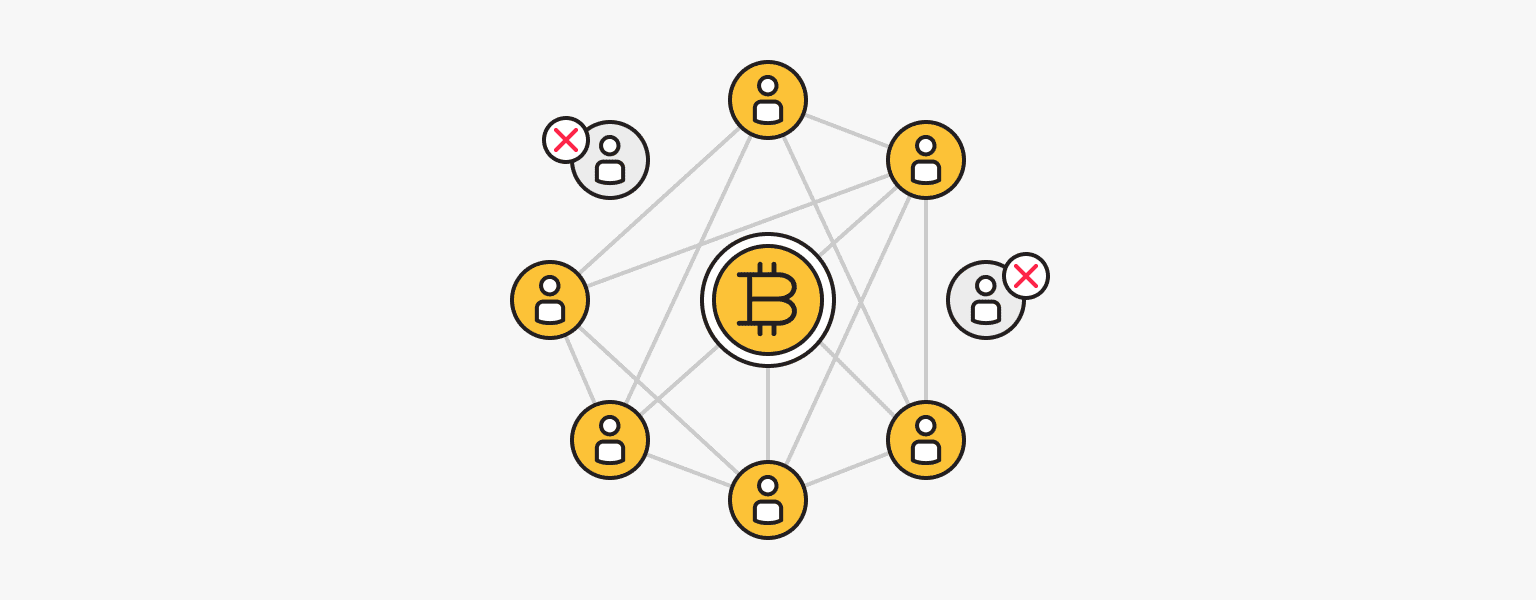
Bitcoin Core implements a set of consensus rules that all participating nodes must follow to achieve consensus and maintain a secure and reliable blockchain. These rules are necessary to ensure the smooth operation of the Bitcoin network and prevent any malicious actions or rule violations. The main consensus rules of Bitcoin Core are as follows:
- Block Validity: Each block in the blockchain must adhere to specific rules to be considered valid. This includes having a correct block header, a valid Proof-of-Work (PoW) solution, and not exceeding the block size limit.
- Transaction Validity: All transactions within a block must be valid according to the Bitcoin protocol. This includes verifying that transaction input data references valid Unspent Transaction Outputs (UTXOs), checking signatures, and ensuring that the overall transaction size is within acceptable limits.
- Fixed Bitcoin Supply: The consensus rules ensure that the reward given to miners for successfully mining a block starts at a certain amount (currently 6.25 BTC) and halves approximately every four years (the next "halving" will be in 2024). This mechanism guarantees that the total supply of Bitcoin will never exceed 21 million coins.
- Prevention of Double Spending: The UTXO model and consensus rules prevent double spending by ensuring that a specific UTXO can only be spent once, thereby preventing fraudulent transactions.
- Segregated Witness (SegWit) Rules: Bitcoin Core includes rules related to the Segregated Witness upgrade, which separates transaction signature data from transaction data, increasing transaction throughput and reducing transaction fees.
Consensus rule changes can occur through soft or hard forks. Soft forks make rules more stringent and provide backward compatibility, while hard forks make rules less stringent and can lead to a chain split if not universally adopted.
Changes to consensus rules require broad consensus among network participants, including node operators and miners. This ensures that updates will be accepted by a significant majority of the network participants to maintain the integrity and security of the blockchain.
As the Bitcoin network grows, making significant changes to the base protocol becomes increasingly challenging. Innovations and improvements are often implemented as second-layer solutions, such as the Lightning Network, to enhance scalability and functionality without requiring fundamental changes to the base layer.
Installing and Running Bitcoin Core
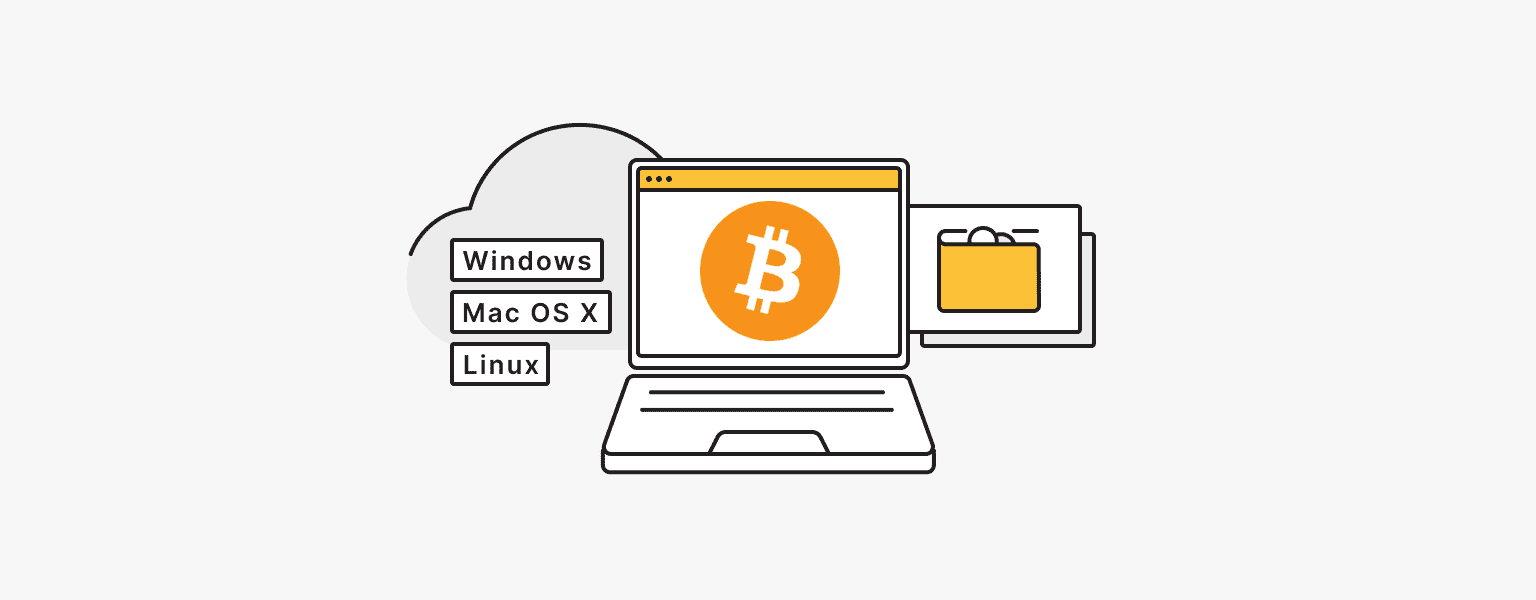
Bitcoin Core, the reference implementation of the Bitcoin protocol, is a powerful software that allows users to run a full node, maintain the blockchain, and completely control their digital assets. Let's go through the main steps for installing, launching, and using Bitcoin Core:
Software and Hardware Requirements
Your computer should be equipped with the latest versions of Windows, Mac OS X, or Linux. While it is possible to run a node on less powerful hardware, using a desktop computer or laptop with decent technical specifications significantly reduces the likelihood of issues and provides higher performance.
Allocate at least 7 GB of free disk space for Bitcoin Core and blockchain data. For the blockchain to grow continuously and handle transactions efficiently, sufficient free disk space with read/write speeds of at least 100 MB/s is necessary.
The system should have at least 2 GB of RAM. Adequate memory helps Bitcoin Core process transactions more efficiently and avoid potential slowdowns during synchronization and transaction verification.
A stable broadband internet connection is crucial for staying connected to the Bitcoin network. Ensure that the data download speed is at least 400 kilobits per second (50 kilobytes) to transmit new transactions and blocks to other nodes effectively.
As running a full node requires constant connectivity to the Bitcoin network, having an unlimited or high-limit data connection is preferable.
Many participants in the Bitcoin community install Bitcoin Core on rented servers using Linux distributions. Ideal platforms for hosting Bitcoin Core nodes are virtual private servers (VPS), which allow users to forgo dedicated hardware and choose a compatible Linux-based operating system for the Bitcoin Core software.
Downloading and Installing Bitcoin Core
To get started with Bitcoin Core, visit the official Bitcoin Core website and go to the "Downloads" section. Choose the version that is suitable for your operating system - Windows, macOS, or Linux. Download the installation file to your computer, run it, and follow the on-screen instructions to complete the installation process.
Running and Using Bitcoin Core
- Choose data directory: When you first run Bitcoin Core, it may prompt you to choose a data directory to store blockchain data. You can stick with the default directory or select another location, especially if you have a dedicated disk with sufficient storage space.
- Synchronization with the Bitcoin network: Bitcoin Core will automatically start synchronizing with the Bitcoin network. This process is known as "downloading the blockchain" and involves downloading and verifying all past transactions in the network. The initial synchronization may take several hours or even days, depending on your internet speed and computer performance. Patience is required during this stage, as it's essential for your node to have the latest transactions and blocks in an up-to-date state.
- Generating a receiving address: Once Bitcoin Core is fully synchronized, you can generate a Bitcoin address to receive funds. Go to the "Receive" tab in the application and click on the "Request Payment" or "New Address" button. This will generate a unique address that you can provide to others for safely receiving Bitcoins.
- Receiving and sending Bitcoins: To receive Bitcoins, share your address with other participants. When someone sends Bitcoins to your address, they will appear in your Bitcoin Core wallet after the transaction is confirmed on the network. To send Bitcoins from your Bitcoin Core wallet, go to the "Send" tab. Enter the recipient's Bitcoin address and the amount you want to send. Double-check all the details before confirming the transaction. Once confirmed, the transaction will be broadcasted to the network for processing.
Bitcoin Core offers various advanced features and settings for experienced users who want more control over their nodes and transactions. However, if you are new to Bitcoin, it is recommended to stick with the default settings and gradually explore these features as you become familiar with the program.
Using a Bitcoin Core Wallet

As a wallet with a full node, Bitcoin Core downloads and stores the entire Bitcoin blockchain locally, making it independent of third-party servers. Unlike other lightweight wallets, Bitcoin Core verifies transactions directly from the blockchain, ensuring transparency and transaction security.
One of the fundamental aspects of the Bitcoin Core wallet is its ability to send and receive payments easily. In this regard, Bitcoin Core offers an intuitive and user-friendly interface for managing transactions.
The process of receiving payments is not only straightforward but also enhances privacy. In Bitcoin Core, you can generate a new address for each transaction, ensuring the confidentiality of your financial data. This feature, known as Hierarchical Deterministic (HD) wallet support, ensures that different Bitcoin addresses cannot be easily linked together, thus increasing transaction anonymity.
Moreover, Bitcoin Core allows users to set their own transaction fees, offering the flexibility to choose speed or cost-effectiveness depending on current network conditions. While the default fee settings usually work well, this option can be useful during periods of high network congestion.
To avoid losing access to your Bitcoins, regular wallet backups are essential. Bitcoin Core uses the wallet.dat file to store private keys and transaction data. To create a backup, go to the "File" menu and select "Backup Wallet." Save the backup file in a secure location, preferably on external data storage devices or encrypted cloud storage.
In addition to the traditional wallet.dat file, Bitcoin Core also supports descriptor-based wallets. Descriptors allow you to derive the entire wallet structure from a single mnemonic seed phrase, greatly enhancing portability and backup capabilities. In case of computer failure or accidental data loss, you can use the backup file to restore your funds and transaction history.
Bitcoin Core manages your private keys and their corresponding Bitcoin addresses. Private keys are cryptographic keys that grant access to your funds. Bitcoin Core securely stores these keys in the wallet.dat file, encrypting them with your chosen password.
Your Bitcoin addresses, used for receiving payments, are also stored in the wallet.dat file. Each address is derived from your private keys using a mathematical algorithm, making them unique for each transaction. The deterministic key generation in Bitcoin Core ensures that your keys and addresses can be reliably derived from the initial wallet file, providing full control and ownership of your funds.
Furthermore, Bitcoin Core allows you to import and export private keys, enabling integration with other wallets or secure cold storage operations. This flexibility is crucial for users who prefer to store some of their funds offline, away from potential internet threats.
Advanced Features of Bitcoin Core
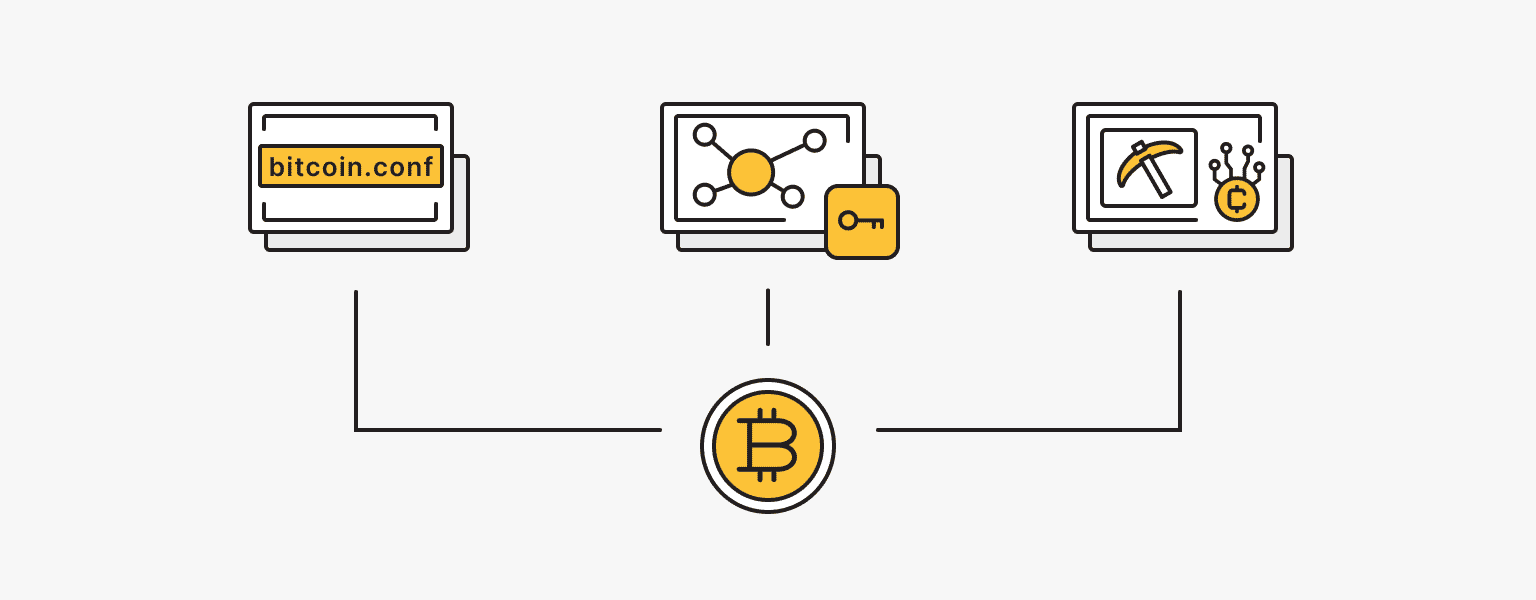
Bitcoin Core also provides a full set of advanced features to meet the needs of experienced users and developers, allowing them to interact more deeply with the Bitcoin protocol and network, thereby promoting overall decentralization and ecosystem security.
Configuring Bitcoin Core
The ability to configure Bitcoin Core through the Bitcoin.conf file allows users to customize various aspects of the node's behavior and its interaction with the Bitcoin network, optimize performance, enhance security, adapt functionality to specific use cases, and take advantage of advanced features based on individual preferences and needs.
Through the Bitcoin.conf configuration file, users can adjust network parameters, define Remote Procedure Call (RPC) options for programmatic interactions, manage wallet settings, control the amount of blockchain data storage using pruning options, and much more.
It's important to note that configuring Bitcoin Core through the configuration file gives users maximum control over its operation and contributes to enhancing security. For example, integrating with the Tor network allows users to hide the node's IP address and achieve a higher level of anonymity when interacting with the network. To further increase network anonymity, users can also utilize a VPN service with a dedicated IP address from is*hosting.
Additionally, users can optimize their node's performance by setting preferred network connection options and controlling the memory allocated for the mempool - a temporary storage for unconfirmed transactions.
Running a Full Node
One of the most advanced and essential features of Bitcoin Core is the ability to run a full node. A full node is a complete copy of the entire Bitcoin blockchain, containing all transactions ever made on the network.
Launching full nodes also allows users to work with their own private keys and not rely on external entities when conducting transactions, thereby increasing confidentiality and control over funds.
Operators of full nodes play a crucial role in protocol upgrades. They can decide whether to support or reject proposed changes to the Bitcoin protocol by appropriately updating their software, facilitating a decentralized decision-making process.
Mining with Bitcoin Core
Since its inception, bitcoin mining has undergone significant changes, transitioning from CPU mining to GPU mining and eventually to specialized ASIC mining. Bitcoin Core, being a full-node implementation, used to include mining functionality in the past. However, in 2016, the mining feature was removed from Bitcoin Core due to the increasing complexity and specialization of mining activities. Although the official software no longer supports mining, users can still configure outdated mining parameters in the Bitcoin.conf file. It is important to note that mining with the CPU using Bitcoin Core is highly inefficient and not recommended for serious mining operations.
Using the Bitcoin Core API

Bitcoin Core provides a JSON-RPC interface, allowing developers to interact with the Bitcoin software through HTTP or HTTPS requests. The API enables developers to access various functionalities of Bitcoin Core and create applications that can interact with the Bitcoin network.
The API can be used with different programming languages such as Python, JavaScript, Java, and more. Bitcoin Core offers several JSON-RPC endpoints that can be used for network interactions. Here are some of the main API calls:
- getblockchaininfo: returns information about the blockchain, such as the current block height, difficulty, etc.
- getnewaddress: generates a new Bitcoin address in your wallet for receiving payments.
- getbalance: retrieves information about the Bitcoin wallet balance.
- sendtoaddress: sends a specified amount of Bitcoin to a given address.
- listtransactions: lists the latest transactions in the wallet.
- getrawtransaction: retrieves information about a specific transaction using its transaction ID (txid).
- getblock: Retrieves information about a specific block using its hash.
Bitcoin Scripting with Bitcoin Core
Bitcoin Core includes a powerful scripting language called Bitcoin Script, which allows users to create complex transactions beyond simple send/receive operations. These scripts are written in a language known as Bitcoin Script.
Bitcoin Script is a simple stack-based language with limited capabilities, intentionally designed to provide security and prevent potential vulnerabilities. Despite its simplicity, it is intentionally non-Turing complete, meaning it lacks loops and other constructs that allow for unrestricted computations. This is done to avoid potential security risks.
- Multisig transactions
Bitcoin Script supports multisig transactions (transactions with multiple signatures) where spending funds requires multiple private keys. To create a multisig address in Bitcoin Core, you can use the addmultisigaddress RPC command.
- Time-locked transactions (CLTV and CSV)
Bitcoin Script allows the creation of time-locked transactions. The two main families of time-locked opcodes are CheckLockTimeVerify (CLTV) and CheckSequenceVerify (CSV). These opcodes enable spending funds only after a specific time or block height has passed.
- Atomic swaps
Atomic swaps allow for the trustless exchange of cryptocurrencies between different blockchains. For example, you can perform an atomic swap between Bitcoin and Litecoin without relying on a trusted intermediary. This is achieved by using hashed time-locked contracts (HTLC) to lock funds on both chains. Bitcoin Core provides some tools and libraries to facilitate atomic swaps.
- Custom scripts
Bitcoin Core allows users to create custom scripts using the createrawtransaction RPC command. You can create scripts with various conditions and spending requirements. However, it's important to ensure that the script is valid according to the rules of Bitcoin Script. Understanding the potential consequences and risks of using custom scripts is crucial, as errors can result in the loss of funds.
Lightning Network Integration with Bitcoin Core
Lightning Network is a second-layer scaling solution for Bitcoin and other blockchain networks. It aims to address some scalability and transaction speed limitations of these blockchains by enabling faster and cheaper transactions through off-chain channels. How does Lightning Network work?
Integration of Lightning Network with Bitcoin Core allows users to conduct Lightning Network transactions directly from the Bitcoin Core wallet. This means users can easily switch between on-chain and off-chain transactions depending on their needs.
Such integration enables the node to act as a routing node in the Lightning Network. This facilitates payment transactions between users who do not have a direct payment channel by finding the most efficient route for the transaction.
Another advantage is the ability to perform multi-path payments, where a single transaction can be split into several smaller transactions and sent through different routes in the Lightning Network. This feature enhances reliability and increases the likelihood of successful transaction execution.
Bitcoin Core with Lightning Network integration supports the feature of dual funding, where both parties contribute funds to open a payment channel. This provides more flexibility and joint management of the channel.
The integration includes the use of watchtowers. Watchtowers are a security feature that helps protect users from potential fraud by monitoring the network on behalf of users to ensure the security of their channels.
Splicing allows users to add or remove funds from an existing Lightning Network channel without closing it. This feature provides greater flexibility in managing channel liquidity.
The modular architecture of Bitcoin Core allows developers to create plugins and extensions that expand the capabilities of the Lightning Network. This encourages innovation and integration of new features into the Lightning Network ecosystem.
Bitcoin Core as a Full Node
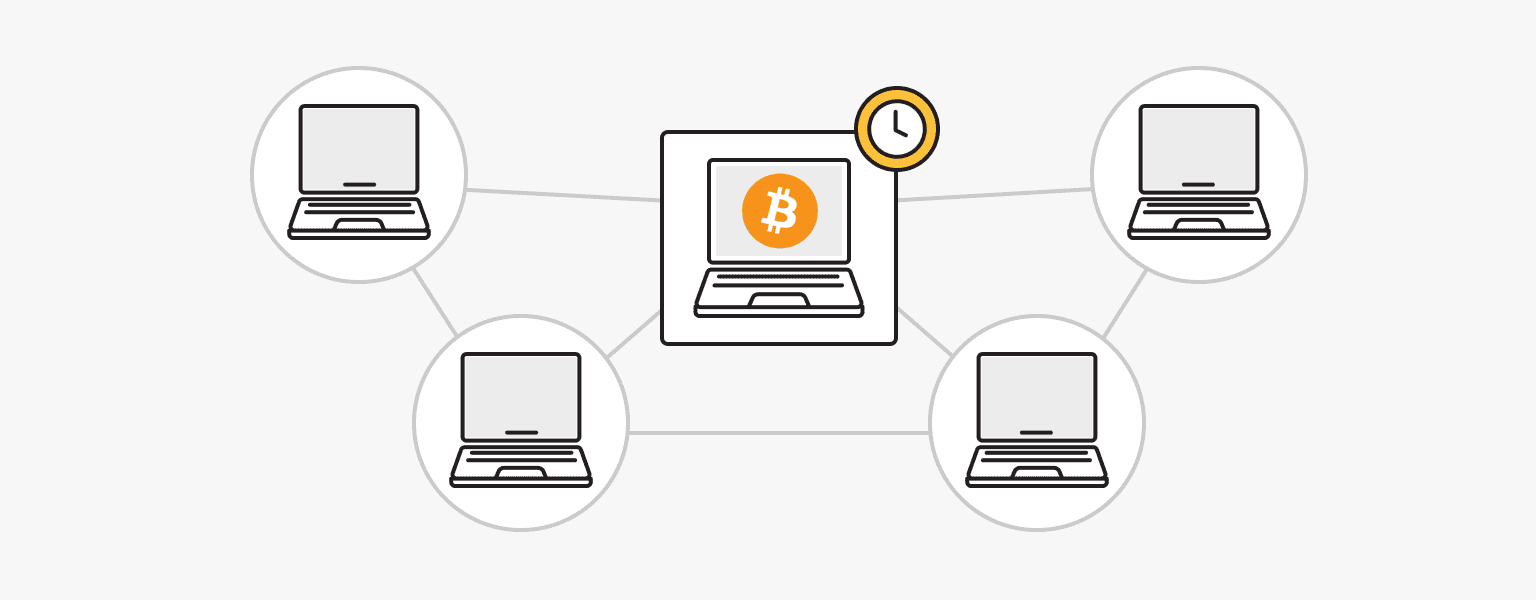
In the world of cryptocurrencies, a Bitcoin node is a crucial element that plays a significant role in maintaining the integrity and security of the Bitcoin network. Running your own Bitcoin Core node offers several advantages that contribute to network decentralization and enhance control over digital assets.
A Bitcoin node is a computer with Bitcoin Core software that performs various important functions:
- It maintains a full copy of the Bitcoin blockchain, verifying transactions and blocks.
- It establishes connections with other nodes, providing a network of communication through which transactions propagate.
- It ensures that only valid blocks are added to the blockchain, rejecting those not complying with the rules of Bitcoin Core software.
- It provides blockchain information, such as balances, to various programs, including wallets.
- It serves as a source for new nodes, providing them with a copy of the blockchain.
To start a full Bitcoin node, all that is needed is to install the Bitcoin Core application and wait for the entire blockchain to download. For the full node to function properly, the computer on which it is installed must be online for at least six hours every day. All processes are carried out by the program automatically and do not require any user involvement.
Validating Transactions and Blocks
When Bitcoin Core receives a new transaction from the network, it goes through a series of checks to determine its validity:
- Syntax and format: Bitcoin Core verifies the syntax and structure of the transaction to ensure it adheres to Bitcoin protocol rules.
- Double spending: The funds being input into the transaction are checked to ensure they have not already been spent in any other confirmed transaction. This prevents double-spending, a critical aspect of Bitcoin's security.
- Script verification: Bitcoin uses the scripting language called Script to determine spending conditions (locking and unlocking scripts). Bitcoin Core checks the input scripts of the transaction to ensure they meet the conditions required for spending the corresponding funds.
- Existence of transaction outputs: The transaction is checked for the existence and validity of all referenced transaction outputs (UTXOs - Unspent Transaction Outputs).
- Transaction fee: The transaction fee is checked to see if it meets the minimum requirements set by the network.
If the transaction passes all these checks, Bitcoin Core considers it valid and propagates it to other nodes in the network for inclusion in a block.
When Bitcoin Core receives a new block from the network, it undergoes thorough verification to ensure the legitimacy of the block and the transactions within it:
- Block header verification: Bitcoin Core checks the block header, which contains metadata about the block, including the hash of the previous block, timestamp, Merkle root, and nonce. Proof of Work (PoW) verification ensures the block hash is below the target difficulty level.
- Merkle root verification: Bitcoin Core recalculates the Merkle root for the transactions in the block and compares it with the Merkle root specified in the block header. This verifies that all transactions in the block are included and not tampered with.
- Transaction verification: Bitcoin Core verifies each transaction in the block.
- Block size and limitations: The block size is checked to ensure it does not exceed the maximum allowable level.
- Median Time Past (MTP) rule: The block's timestamp must be greater than the median timestamp of the previous 11 blocks to prevent timestamp manipulation.
- Checkpoint (optional): In some versions of Bitcoin Core, checkpointing may be used to prevent the reorganization of the chain for certain blocks.
If the block passes all these checks, Bitcoin Core adds it to its local copy of the blockchain and propagates it to other nodes in the network. Other nodes perform similar verification, and if consensus is achieved, the block becomes part of the official Bitcoin blockchain.
Contributing to the Network
Participating in the Bitcoin network as a full node involves allowing incoming connections to your node. This makes your node accessible to other nodes in the network, enabling it to participate in the propagation of the network.
- Server-based Node (No special setup required)
If your Bitcoin Core node is running on a server directly connected to the internet (e.g., on a cloud server), no special setup is usually required. Your server should be capable of accepting incoming connections by default.
- Home Connection (Filtered through Router/Modem)
For nodes running through a home internet connection, routers and modems typically filter incoming connections by default for security reasons. To allow incoming connections, you need to configure the router and firewall settings manually.
- Automatic Router Configuration (UPnP)
Bitcoin Core has a Universal Plug and Play (UPnP) feature that allows the program to request automatic configuration from the router to allow incoming connections to the Bitcoin port (port 8333).
If the router supports UPnP, Bitcoin Core will attempt to use it to open the necessary port automatically. This will happen when you enable the "Listening" option in the Bitcoin Core settings.
- Manual Router Setup
If your router does not support UPnP or automatic configuration, you need to manually set it up to forward incoming connections on port 8333 to the local IP address of your Bitcoin Core node.
Find the "Port Forwarding" or "Virtual Server" section in your router settings. Add a new port forwarding rule to direct port 8333 (both TCP and UDP) to the local IP address of your Bitcoin Core node.
Save the changes and restart the router.
- Firewall Configuration
Additionally, you may need to configure the computer's firewall to allow incoming connections on port 8333. Instructions for configuring firewall settings can be found in the operating system documentation.
By allowing incoming connections to your Bitcoin Core node, you actively contribute to the network's decentralization. Your node becomes accessible to other nodes, facilitating the efficient propagation of transactions and blocks. As a result, you become an important part of the distributed network, verifying transactions, maintaining the integrity of the blockchain, and ensuring the security of the entire Bitcoin ecosystem.
Security and Privacy with Bitcoin Core

Bitcoin Core is a popular software implementation of Bitcoin aimed at increasing user privacy when interacting with the Bitcoin network. It is essential to note that while transactions on the Bitcoin network are publicly recorded on the blockchain, user privacy can still be protected to some extent through various measures.
Pseudonymous Transactions: Bitcoin transactions are pseudonymous, meaning they do not reveal the real identities of the participating parties. Transactions are identified by cryptographic addresses, such as "5a35b," rather than real names. However, it is the user's responsibility to prevent the association of these addresses with their real identity.
No Registration Required: Bitcoin Core does not require users to register or provide personal information. This approach avoids associating real names or identification information with Bitcoin transactions.
Privacy for Received Transactions: Bitcoin Core downloads and processes all 230 million transactions in the Bitcoin blockchain. While this process takes considerable time (about 4 hours initially and 5 minutes daily for updates), it provides so-called "information-theoretic" or perfect privacy for received transactions.
Strict Privacy for Sent Transactions: While sending Bitcoin transactions requires public broadcasting of the transaction to the network, Bitcoin Core enhances privacy. By rebroadcasting transactions to all its peers, the program confuses attempts to trace a user's transactions.
Compatibility with Tor: Bitcoin Core is compatible with the Tor network, which allows activity in the network to remain unlinked to the user's IP address.
Decentralized Peer Discovery: Bitcoin Core prefers decentralized peer discovery, meaning it independently discovers new peers in the network rather than relying on a centralized entity. This reduces the risk of connecting to malicious peers, which could compromise transaction privacy and security.
Thus, Bitcoin Core offers users a range of features and practices that enhance privacy when using the Bitcoin network. However, it is important to remember that while Bitcoin provides a certain level of privacy, it is not completely anonymous. Users should still exercise caution and follow best practices to protect their personal and financial information.
- Use the latest version: Always use the latest version of Bitcoin Core. Developers often release updates to address bugs and security vulnerabilities.
- Enable wallet encryption: Encrypt your Bitcoin Core wallet with a strong passphrase to prevent unauthorized access if the wallet file is compromised.
- Backup your wallet: Regularly create backup copies of your wallet file and store them in a secure location. Consider using multiple encrypted backups, such as on external storage devices or offline hardware wallets.
- Use a secure operating system: Use a reliable and up-to-date operating system with proper security settings. Avoid using unreliable or pirated software.
- Protect your device: Secure your computer or mobile device with a strong password, PIN, or biometric authentication.
- Enable two-factor authentication (2FA): If your Bitcoin Core wallet supports 2FA, enable it to provide an additional layer of security.
- Verify transactions before signing: Always verify transaction details before signing them. Check the recipient address, transaction amount, and transaction fees.
- Use hardware wallets: Consider using a hardware wallet when storing significant amounts of Bitcoin. Hardware wallets allow you to store private keys offline, protecting them from internet-based threats. What are cold wallets, and do I need them?
- Use multi-signature wallets (Multi-sig): Multi-signature wallets require the use of multiple private keys to authorize transactions, enhancing security against unauthorized access.
- Store private keys offline: Do not store private keys and wallet files on devices connected to the internet.
- Test with small transactions: When dealing with a new recipient or service, start with a small amount to ensure everything works correctly before sending more significant funds.
- Regularly monitor transactions: Keep track of Bitcoin transactions to detect any unauthorized activities promptly.
- Practice privacy measures: Apply privacy-enhancing methods, such as generating new addresses for each transaction and using the Tor network for additional anonymity.
Bitcoin Core Network Attacks and Defense
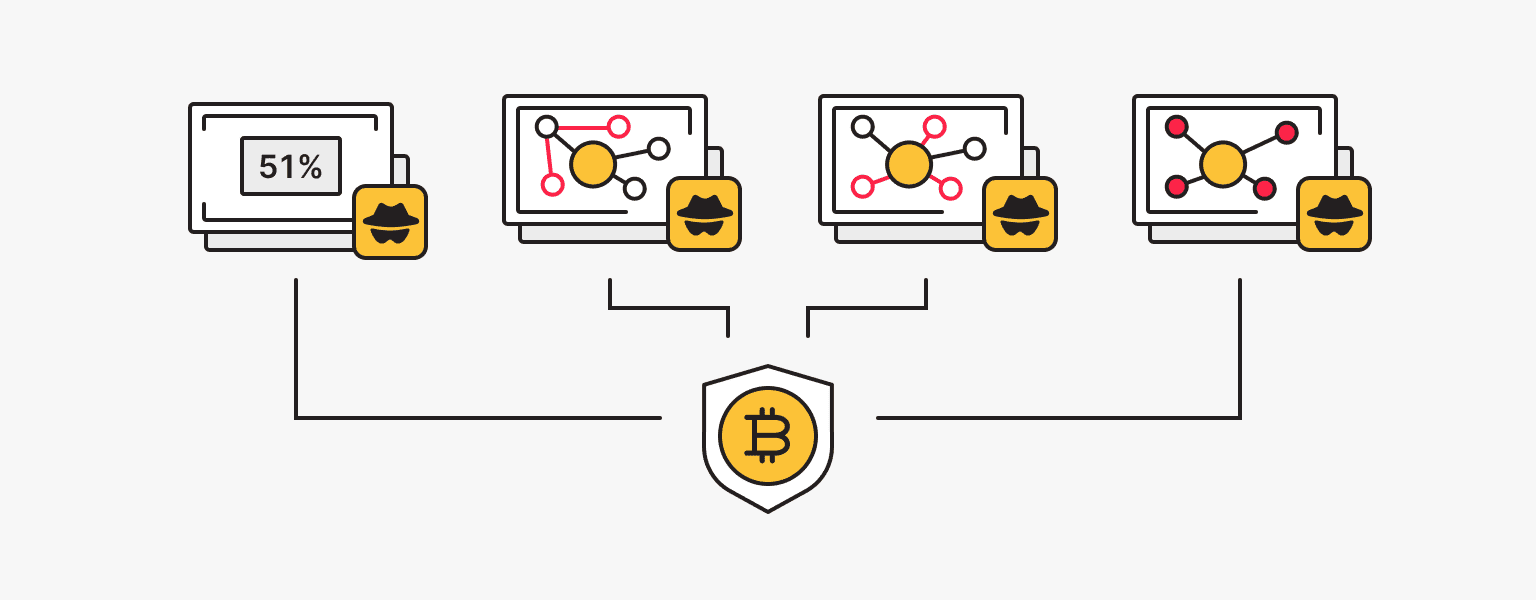
The Bitcoin network faces various potential threats from malicious actors seeking to exploit vulnerabilities for their own gain. However, the network's design and measures implemented in Bitcoin Core aim to provide robust protection against these attacks.
51% Attack
A 51% attack occurs when an individual or group gains control of more than 50% of the network's hash rate, allowing them to control the blockchain consensus and potentially manipulate transactions.
Bitcoin's security model relies on a decentralized network of miners. The more distributed the network's hash rate, the more secure it is against 51% of attacks. The global distribution of miners prevents any single entity from gaining control over the network. Additionally, the Bitcoin community actively monitors and responds to suspicious hash rate concentrations, reducing the risk of such an attack.
Sybil Attacks
A Sybil attack involves a malicious actor creating multiple nodes or identities to gain control over a significant portion of the network and potentially manipulate its behavior.
Bitcoin Core employs various mechanisms, such as limited connections and data exchange with well-established peers, to reduce the risk of Sybil attacks. Nodes maintain a limited number of connections and interact only with reputable peers, making it challenging for malicious actors to flood the network with many malicious nodes and gain control over a significant portion of the network.
DoS Attacks
Denial-of-Service (DoS) attacks aim to disrupt the network by overwhelming nodes with excessive traffic or unreliable data, leading to increased delays or temporary unavailability.
Bitcoin Core implements several measures to protect against DoS attacks. It limits the number of connections from a single IP address, sets restrictions on block and transaction sizes to prevent abuse, and uses rate-limiting mechanisms to control data transmission speeds.
Eclipse Attack
An Eclipse attack involves surrounding a target node with malicious nodes, isolating it from the rest of the network to control its information flows and potentially manipulate its transactions.
By default, Bitcoin Core uses random peer connections, making it challenging for malicious actors to isolate specific nodes through Eclipse attacks. Random connections increase the network's resilience against attempts to isolate particular nodes and reduce the risk of manipulation.
Transaction Malleability
Transaction malleability allows malicious actors to modify the transaction ID without changing its content, leading to issues with tracking and processing transactions.
Implementing Segregated Witness (SegWit) in Bitcoin Core addresses transaction malleability by separating witness data from the transaction ID. This modification makes transactions more resistant to malleability-related problems, enhancing the overall reliability and security of the Bitcoin network.
Despite the various protective measures implemented in Bitcoin Core and the Bitcoin network, it is essential to understand that no system can be completely immune to potential threats. However, the decentralized nature of the Bitcoin network, combined with the ongoing collaboration between miners, developers, and users, ensures a continuous improvement of the network's reliability and protection against possible attacks.
Present and Future of Bitcoin Core

Bitcoin Core recently released version 25.0, which includes several important updates. This software update is crucial for the functioning and security of the entire Bitcoin network.
Version 25.0 update brings numerous new features, bug fixes, performance improvements, and translation updates. Significant enhancements have been made to transaction policies, expanding the possibilities of using reduced-sized transactions. Full-node clients can now verify transactions, store a copy of the blockchain, and participate in the consensus process.
Noteworthy changes include Peer-to-Peer (P2P) and network-related updates, new Remote Procedure Calls (RPC) for faster wallet rescans, and updates to existing RPCs. Additionally, mempool and relay policies have been updated.
This update is timely and addresses scalability and transaction performance issues caused by the presence of ordinals in the Bitcoin network. Bitcoin Core version 25.0 has undergone comprehensive evaluation and is supported on various operating systems, including Linux, macOS 10.15, Windows 7, and newer versions. Although it should work on other Unix-like systems, it is not frequently tested and thus not recommended for unsupported platforms.
Despite continuous improvements and development, Bitcoin Core faces several significant challenges. The main challenge remains scalability, as the original blockchain design limits block size, leading to congestion during periods of high transaction activity, increased confirmation times, and higher transaction fees. Additionally, the energy-intensive mining process raises concerns among environmentalists, necessitating the development of strategies to reduce energy consumption. Centralization of mining power in a few large pools also threatens the security and decentralization of the network.
Another obstacle is achieving consensus on protocol updates, requiring agreement among miners, developers, and users, often leading to contentious debates. As the value of Bitcoin grows and attracts more malicious actors, security becomes an increasingly pressing issue. Protecting the network from potential vulnerabilities and attacks is of paramount importance.
To address these challenges, the Bitcoin Core development team, together with the community, is continuously working on solutions, research, and new technologies. Notable improvements include Lightning Network and Segregated Witness (SegWit), which increase transaction throughput and reduce fees. Research and development efforts continue to focus on enhancing privacy, energy efficiency, and security to ensure the network's sustainability.
The Impact of Bitcoin Core on Financial Systems
Bitcoin Core has played a key role in developing the world's first decentralized cryptocurrency, demonstrating the feasibility of using digital currencies that operate without a central governing authority. Its success has served as a stimulus for creating many other cryptocurrencies and digital assets.
The decentralized nature of Bitcoin Core eliminates the need for intermediaries such as banks, allowing for direct peer-to-peer transactions. It introduced the concept of trustlessness, where parties can transact without relying on a trusted third party, leading to increased transparency and security.
Bitcoin Core enforces the monetary policy of Bitcoin, ensuring a limited supply of 21 million coins. This scarcity and a deflationary emission schedule have sparked discussions about Bitcoin's potential as digital gold and a hedge against traditional fiat currencies.
The emergence of Bitcoin Core has sparked significant financial innovations, inspiring new use cases and applications beyond traditional payments. It laid the foundation for developing various financial products and services within the cryptocurrency ecosystem.
Being the first successful implementation of blockchain technology, Bitcoin Core contributed to developing blockchain concepts and their applications across various industries, not limited to financial use cases.
The continuous development of Bitcoin Core has led to the emergence of various innovative solutions, such as Segregated Witness (SegWit) and Lightning Network. These technological advancements aim to improve scalability and transaction speed, making Bitcoin more viable for everyday use and opening up new possibilities for its application.
Bitcoin Improvement Proposals (BIPs)

Bitcoin Improvement Proposals (BIPs) are official proposals for changing the Bitcoin network. As an open-source and consensus-driven system, Bitcoin relies on community collaboration to propose and approve improvements. BIPs can cover various aspects, such as software upgrades, consensus rule enhancements, community standards, or development processes.
The process of creating a BIP starts with any member of the Bitcoin community making a proposal, regardless of their authority. Typically, the proposal is discussed and refined through channels like Bitcoin mailing lists, Internet Relay Chat (IRC), or Slack. After refinement, the proposal is assigned a BIP number and published in the Bitcoin Core repository on GitHub.
The next stage involves broad discussion and feedback from the community. If there are valid concerns, the BIP may be rejected, and the process would need to start over. However, if a rough consensus is achieved and issues are minimal, the community chooses a path for activating the proposed change.
There are various types of BIPs, including:
- Consensus BIPs: Propose changes to Bitcoin's consensus rules, ensuring all nodes in the network follow the same consensus rules. Consensus upgrades require explicit activation in the Bitcoin network and must maintain backward compatibility.
- Standard BIPs: These BIPs don't propose direct changes to Bitcoin Core code but establish recommendations or practices for other Bitcoin software providers, such as wallets and exchanges. These standards aim to ensure compatibility across different Bitcoin-related programs.
- Process BIPs: Optimize Bitcoin development or community discussions and don't require changes to the code. They define rules and formats for handling future BIPs and their activation.
Adoption of a BIP is a lengthy process that can take several years. The proposal must be approved by approximately 95% of miners and node operators, who must switch to the new software version.
After a BIP is accepted, it is incorporated into the Bitcoin Core code and then activated. There can be a significant time gap between these stages. For example, with Taproot, the proposal was accepted and added to Bitcoin Core in October 2020, but it was activated only in November 2021.
The BIP process is crucial for maintaining transparency, community involvement, and decentralization in the development and evolution of Bitcoin. While a small group of Bitcoin Core developers writes much of the code and proposes BIPs, the activation of these proposals is determined by the nodes in the network. Anyone can operate a node and participate in the decision-making process, ensuring openness and inclusivity in Bitcoin's development.
To learn more about Bitcoin Core and stay updated on its development, you can use various resources, including:
- The official website of Bitcoin Core contains essential information about the software, its features, download methods, and usage.
- The Bitcoin Core repository on GitHub, where the source code of Bitcoin Core is hosted and actively developed. You can track the latest updates, review code changes, find information about ongoing discussions and proposed improvements.
- Developers and contributors of Bitcoin Core actively discuss technical aspects and updates on specialized mailing lists. The two main lists are Bitcoin-dev and Bitcoin-discuss.
- Bitcoin Wiki contains much information about Bitcoin Core, the Bitcoin protocol, and related topics. It provides technical details, tutorials, and historical information.
- The BitcoinTalk forum is one of the oldest and most active communities related to Bitcoin and its development. It offers a platform for discussing various aspects of Bitcoin Core and the broader cryptocurrency ecosystem.
- The Bitcoin Optech Newsletter focuses on technical topics related to Bitcoin Core, Lightning Network, and other related projects. It regularly publishes news about optimization methods and important events.
- Twitter is an active platform for discussions and news related to Bitcoin. Some well-known accounts to follow include @Bitcoincoreorg.
- The Bitcoin Core community actively uses IRC (Internet Relay Chat) for real-time discussions and support. You can join the #Bitcoin-core-dev channel on Freenode or other relevant channels to participate. Instructions for accessing IRC can be found on the Bitcoin Wiki.
Personal VPN
Stay anonymous online and don't endanger your personal data with a dedicated IP.
Get $5.00/mo